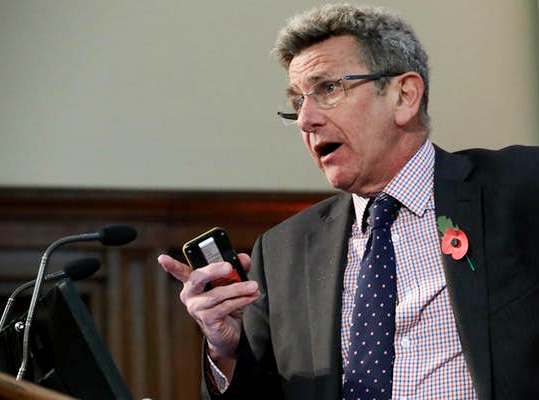Firefighter health comes into focus

Above:
Jonathan O’Neill OBE, Managing Director of the Fire Protection Association (FPA).
Courtesy FPA
To assist in this research, the Fire Protection Association is bringing together global fire toxicity experts to share their knowledge at an inaugural conference in London on 30th March. The day will be summarised in a review paper submitted to government to assist and support its research programme.
Fire toxicity is already a consideration for material selection in the transport sector. So why are the same rules not applied in the built environment?
Building product fire toxicity is a primary selection factor when choosing materials within the transport sector. The London Underground adopted a leading fire toxicity strategy when it was constructed - a strategy which is recognised globally. Now, the UK government is investigating whether there is a need for such measures to be implemented in the building regulations.
Dr James Glockling - technical director of the Fire Protection Association explained: “Whether you’re sitting on a train on the London Underground, travelling on a plane or by boat, the likelihood is that the materials surrounding you have been specifically selected to ensure that in the event of a fire, the toxicity of the products resulting from their involvement will have a lower chance of impeding your escape or affecting your long-term health.
"Conversely, measuring. Accounting for toxicity in building products is currently not a legal requirement but might need to be a consideration going forward due to the increasing complexity of some building types and forms of construction”
The international line up of renowned experts will report on the most recent research undertaken on the challenges of immediate and long-term toxic health effects to the public and firefighters and consider readiness to respond to any regulatory changes being made.
- Richard Hull, professor of chemistry and fire science, UCLAN – Acute fire toxicity challenges
- Jeff Burgess, associate dean for research, University of Arizona – Latest research into long-term fire fighter health
- Anna Stec, professor in fire chemistry, UCLAN – Environmental contamination
- Martin Weller, senior fire safety engineer, SW Atkins : Case study – Building product toxicity control on the London Underground
- Hideki Yoshioka, senior researcher, National Institute for Land and Infrastructure Management (NILIM), Japan v Regulating for building product toxicity in Japan
- Per Blomqvist, senior research scientist, Research Institutes of Sweden – Appropriateness of toxicity evaluation test methods
- Peter Woodburn, associate director, Arup – Challenges of working with a reduced materials palette
Jonathan O’Neill, the Fire Protection Association’s managing director said: “This conference is a must-attend, as it will reinforce our view that a range of factors, such as measurement of toxic fumes, need to be considered when choosing building materials, in order to protect buildings and ultimately save lives.”
This change could impact you and the building you work in, whether you’re in social or student housing; the fire and rescue service; the education sector; product manufacturing; facilities management; construction and design; fire engineering; healthcare; or local government.












